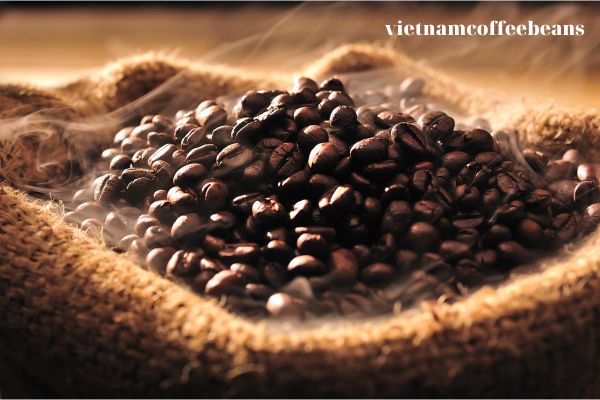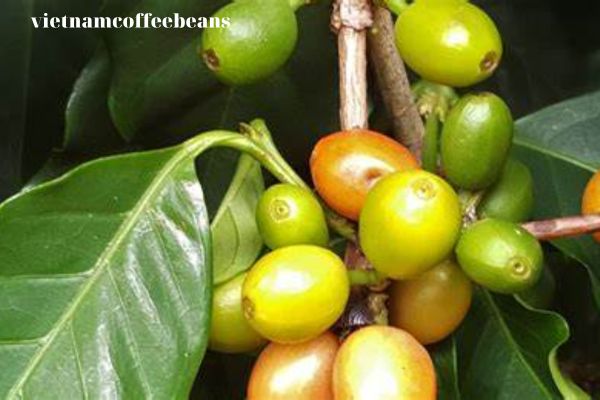
As a coffee lover, I know firsthand that the choice of beans can make or break your morning cup of joe. With so many options available on the market, selecting the right beans can be overwhelming. But fear not, as there are several factors to consider when choosing coffee beans.
First and foremost, it’s important to consider the origin of the coffee beans. Different regions produce unique flavors due to variations in climate and soil composition. As such, understanding where your coffee comes from can help you find a flavor profile that suits your taste buds.
In this article, we’ll explore other key factors such as roast level, freshness of beans, processing methods and how they all work together to influence your coffee experience.
So let’s dive in!
Factors to Consider When Choosing Coffee Beans: Origin of the coffee beans

You may not have realized it, but the origin of your coffee beans plays a huge role in the overall flavor and quality of your morning cup. The geographical diversity of coffee-growing regions around the world means that different climates, soils, and altitudes contribute to unique taste profiles.
For instance, beans from South America tend to have a mild acidity with notes of chocolate and caramel, while those from Africa are often fruitier with a brighter acidity.
Moreover, the cultural significance of coffee-producing countries also shapes their approach to growing and processing beans.
In Ethiopia, where coffee is believed to have originated, farmers still use traditional methods such as drying coffee cherries on raised beds.
This results in complex flavors with floral and citrusy notes. In contrast, Brazil has become known for its large-scale production using modern machinery which produces more consistent flavors.
When choosing based on origin, it’s important to consider what kind of flavor profile you prefer. Do you like bold and earthy or fruity and bright? Knowing where your beans come from can help you make an informed decision about which region’s coffee will suit your preferences best.
Next up: roast level – another crucial factor in determining the taste of your morning brew!
Roast coffee beans level
When it comes to picking out your perfect cup of joe, don’t underestimate the power of a roast level that transports you to a cozy fireside in autumn. The roast level is one of the most critical factors influencing coffee flavor development and can significantly impact your brewing methods.
Roasting involves heating green coffee beans until they turn brown, developing their unique flavors and aromas. The three main types of coffee roasts are light, medium, and dark. Light roasts retain much of the original bean’s flavor profile while highlighting its acidity and floral or fruity notes.
Medium roasts have a more balanced flavor with less acidity than light roasts but still showcase some subtle notes. On the other hand, dark roasts offer bold flavors with low acidity and smoky undertones. It is essential to choose a roast level that suits your coffee taste preferences and brewing method.
For example, pour-over enthusiasts may find lighter roasts more suitable as they allow for better extraction while espresso lovers may prefer darker blends for their intense flavors. When selecting your ideal roast level, keep in mind that each type has its unique characteristics that will affect how you experience your coffee’s taste and aroma.
With this in mind, let’s explore another critical factor when choosing: freshness!
Freshness of the whole beans
The freshness of your coffee beans is crucial to consider when choosing the perfect cup. The moment the beans are roasted, they begin to lose their flavor and aroma. Therefore, it’s essential to choose beans that have been recently roasted and stored correctly.
Proper storage methods can help preserve the freshness of your beans for longer periods. When it comes to brewing techniques, fresh can make a significant difference in taste. If you brew stale or old beans, you may end up with a flat-tasting cup lacking in depth and complexity.
However, if you use freshly roasted and stored beans, you’ll enjoy a more nuanced flavor profile that will tantalize your taste buds. In summary, if you want to experience the full range of flavors and aromas in your coffee cup, make sure to choose freshly roasted and well-stored.
You can look for premium coffee bean options that have certifications such as organic, fair trade, or specialty.
In the next step about processing methods, we’ll explore how different processing techniques impact the overall taste of your cup of joe.
Methods of processing different types of coffee

If you’re a person love drink coffee who craves a more complex and nuanced taste profile, understanding different processing methods is crucial. The way in which are processed affects not only the flavor but also the sustainable farming practices and environmental impact of the coffee industry.
Generally, there are two main processing methods: dry or natural process and washed or wet process. Dry/natural processing involves drying the entire cherry on raised beds before removing it from the bean by milling. This method imparts an earthy flavor to the beans due to fermentation during drying. It also requires less water than wet processing, making it more environmentally friendly.
On the other hand, washed/wet processing involves removing cherry pulp from seeds before fermenting them for up to 48 hours. This method produces cleaner and brighter tasting coffee with a higher acidity level.
When choosing between these two processes, several factors come into play such as personal preference, environmental impact, and sustainability practices. For instance, while dry/natural process consumes fewer resources like water, its resulting taste may not be suitable for everyone’s palate.
In contrast, although washed/wet processing uses more water in cleaning off pulp residues before fermentation compared to dry/natural method; it is considered more eco-friendly because wastewater can be treated before releasing back into nature without causing harm.
To choose your preferred processing method of carefully consider what matters most to you in terms of taste profile and sustainability practices of production methods that align with personal preferences while keeping an eye out for environmental impact concerns related to farming practices used during cultivation too!
Flavor profile and personal preferences
As a coffee lover, I understand the importance of finding a flavor profile that fits my personal preferences.
It’s essential to consider the variety of flavors available and how they will complement your brewing method. Different bean varieties can produce different taste profiles depending on their origin, processing method, and roast level.
To assist in identifying various flavors, many specialty coffee roasters provide tasting notes on their packaging or websites. These notes detail the characteristics of each blend and can help determine which one is right for you.
Additionally, with advancements in bean-to-cup technology, you can have more control over your brew’s flavor profile by adjusting settings such as grind size and water temperature.
The table below showcases some common coffee flavors that you may encounter when selecting beans:
| Flavor Profile | Description |
|---|---|
| Fruity | Tastes like berries or citrus fruits |
| Nutty | Has a nut-like aroma and taste |
| Chocolaty | Has a rich chocolate flavor with hints of cocoa |
| Floral | Has a floral aroma with sweet undertones |
| Spicy | Contains earthy tones with hints of spice |
Ultimately, when it comes to selecting based on flavor profile and personal preferences, there are no set rules. It all depends on what tastes good to you!
Experimenting with different blends from different regions is an excellent way to expand your palate and find new favorites. Remember always to choose high-quality beans from reputable sources for the best coffee experience possible.
Frequently Asked Questions
Conclusion
So there you have it, folks. When choosing coffee beans, there are several factors to consider in order to ensure that you get the perfect cup of coffee every time.
The origin of the beans can give you an idea of their flavor profile and quality. Roast level will determine the taste and aroma of your brew, while freshness is crucial for a flavorful cup. Processing methods also play a role in determining the final taste of your coffee.
And lastly, don’t forget to take into account your personal preferences when it comes to flavor profiles. By considering all these factors, you’ll be able to choose the perfect coffee beans that suit your taste buds and brewing style.
So, go ahead and experiment with different types of beans until you find the perfect blend for you!
Hope you get useful information from the article, if you have any questions or want to read more articles, please visit the website: vietnamcoffeebeans
Thank you!






